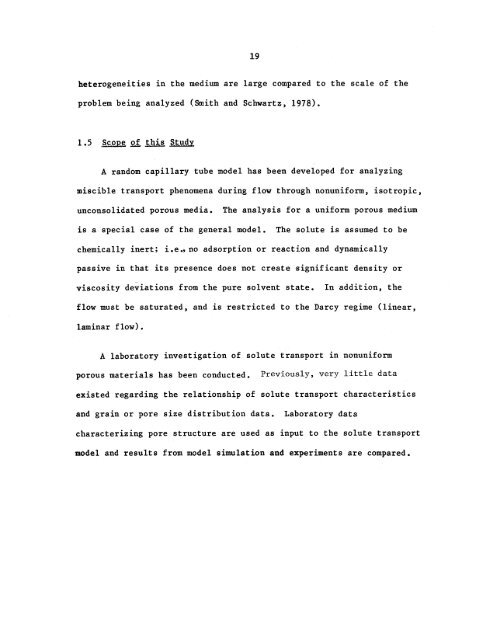longitudinal dispersion in nonuniform isotropic porous media
longitudinal dispersion in nonuniform isotropic porous media
longitudinal dispersion in nonuniform isotropic porous media
Create successful ePaper yourself
Turn your PDF publications into a flip-book with our unique Google optimized e-Paper software.
heterogeneities <strong>in</strong> the medium are large compared to the scale of the<br />
19<br />
problem be<strong>in</strong>g analyzed (Smith and Schwartz, 1978).<br />
A random capillary tube model has been developed for analyz<strong>in</strong>g<br />
miscible transport phenomena dur<strong>in</strong>g flow through <strong>nonuniform</strong>, <strong>isotropic</strong>,<br />
unconsolidated <strong>porous</strong> <strong>media</strong>. The analysis for a uniform <strong>porous</strong> medium<br />
is a special case of the general model. The solute is assumed to be<br />
chemically <strong>in</strong>ert; i.e., no adsorption or reaction and dynamically<br />
passive <strong>in</strong> that its presence does not create significant density or<br />
viscosity deviations from the pure solvent state. In addition, the<br />
flow must be saturated, and is restricted to the Darcy regime (l<strong>in</strong>ear,<br />
lam<strong>in</strong>ar flow).<br />
A laboratory <strong>in</strong>vestigation of solute transport <strong>in</strong> <strong>nonuniform</strong><br />
<strong>porous</strong> materials has been conducted. Previously, very little data<br />
existed regard<strong>in</strong>g the relationship of solute transport characteristics<br />
and gra<strong>in</strong> or pore size distribution data. Laboratory data<br />
characteriz<strong>in</strong>g pore structure are used as <strong>in</strong>put to the solute transport<br />
model and results from model simulation and experiments are compared.

















